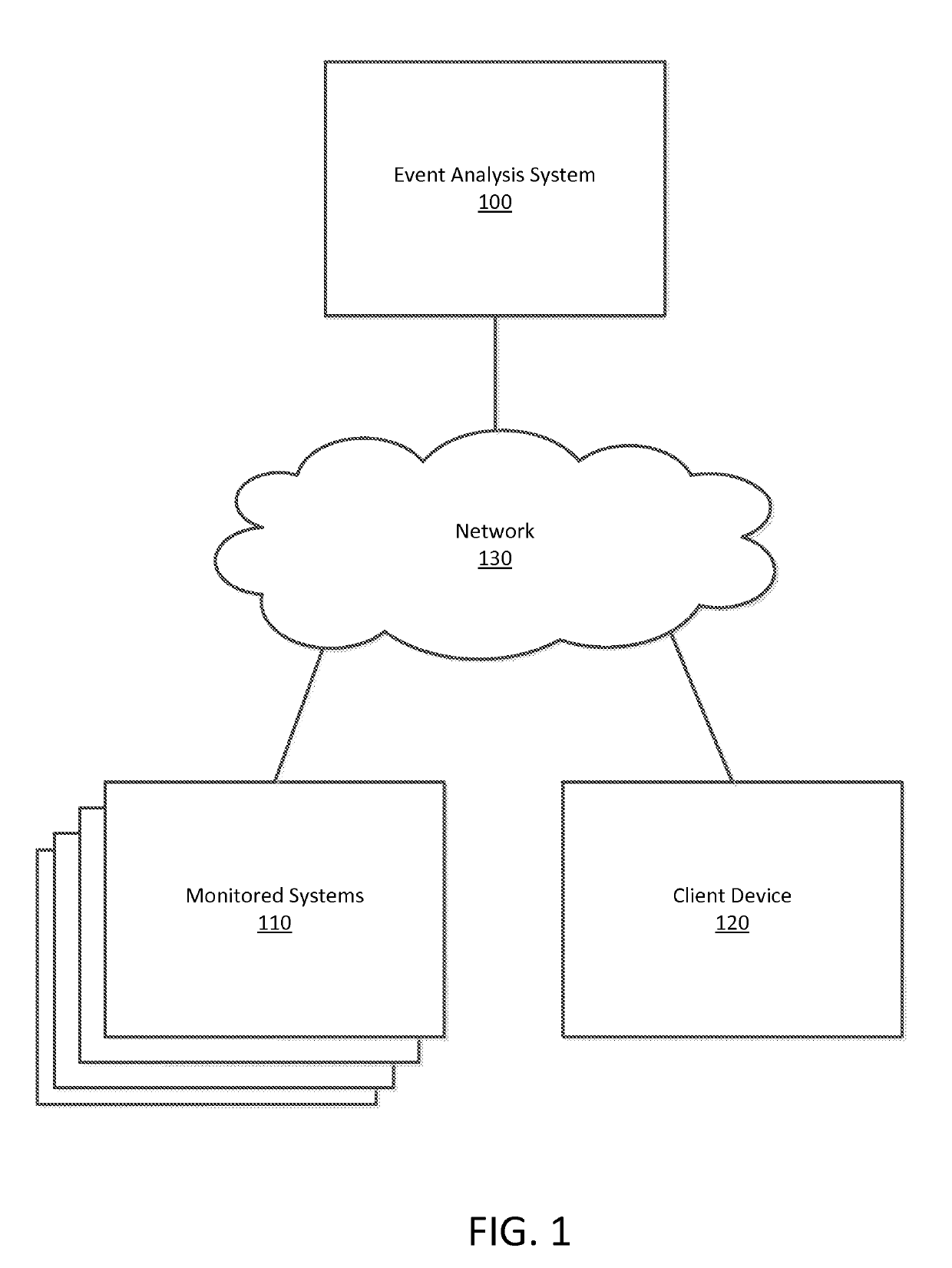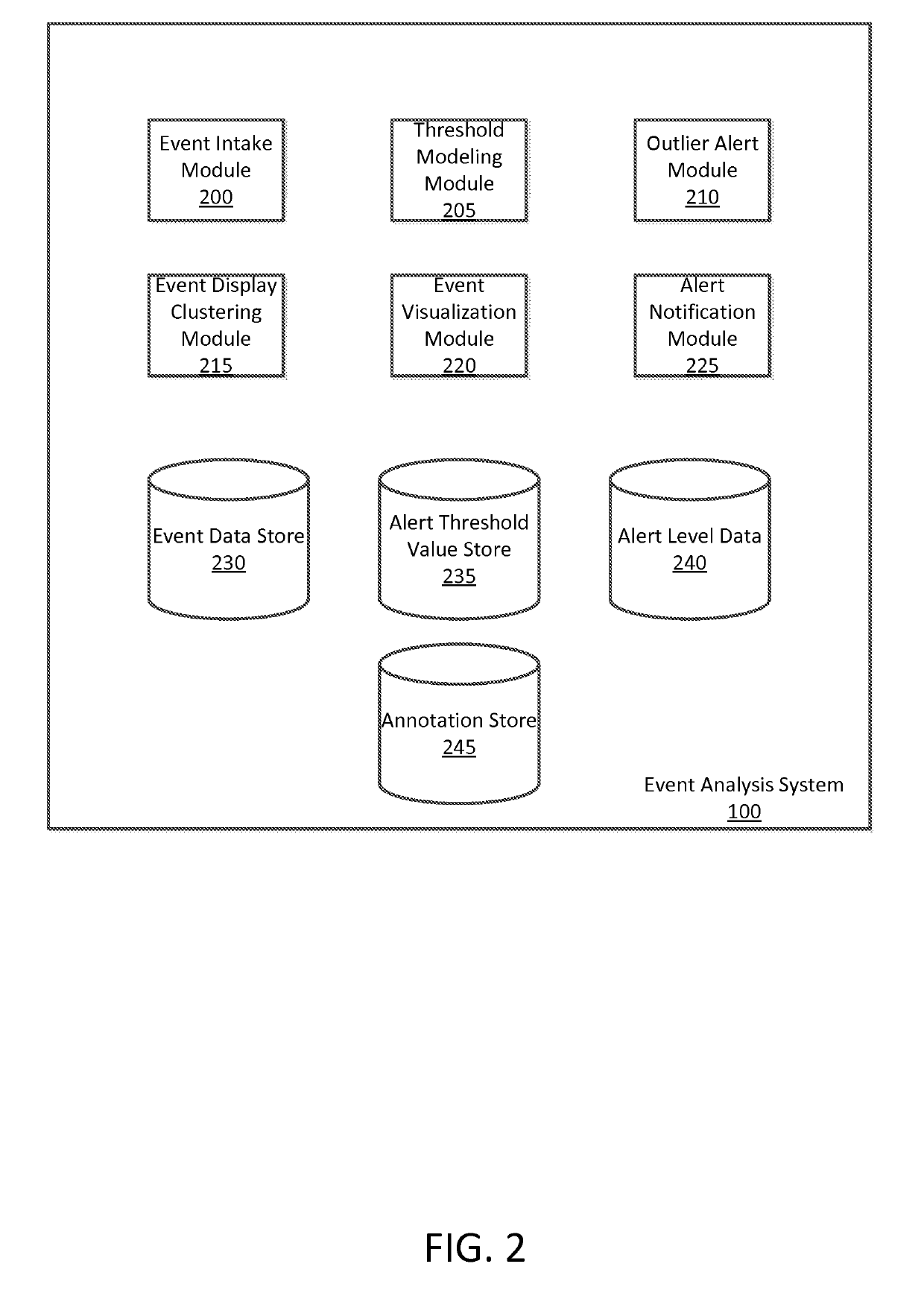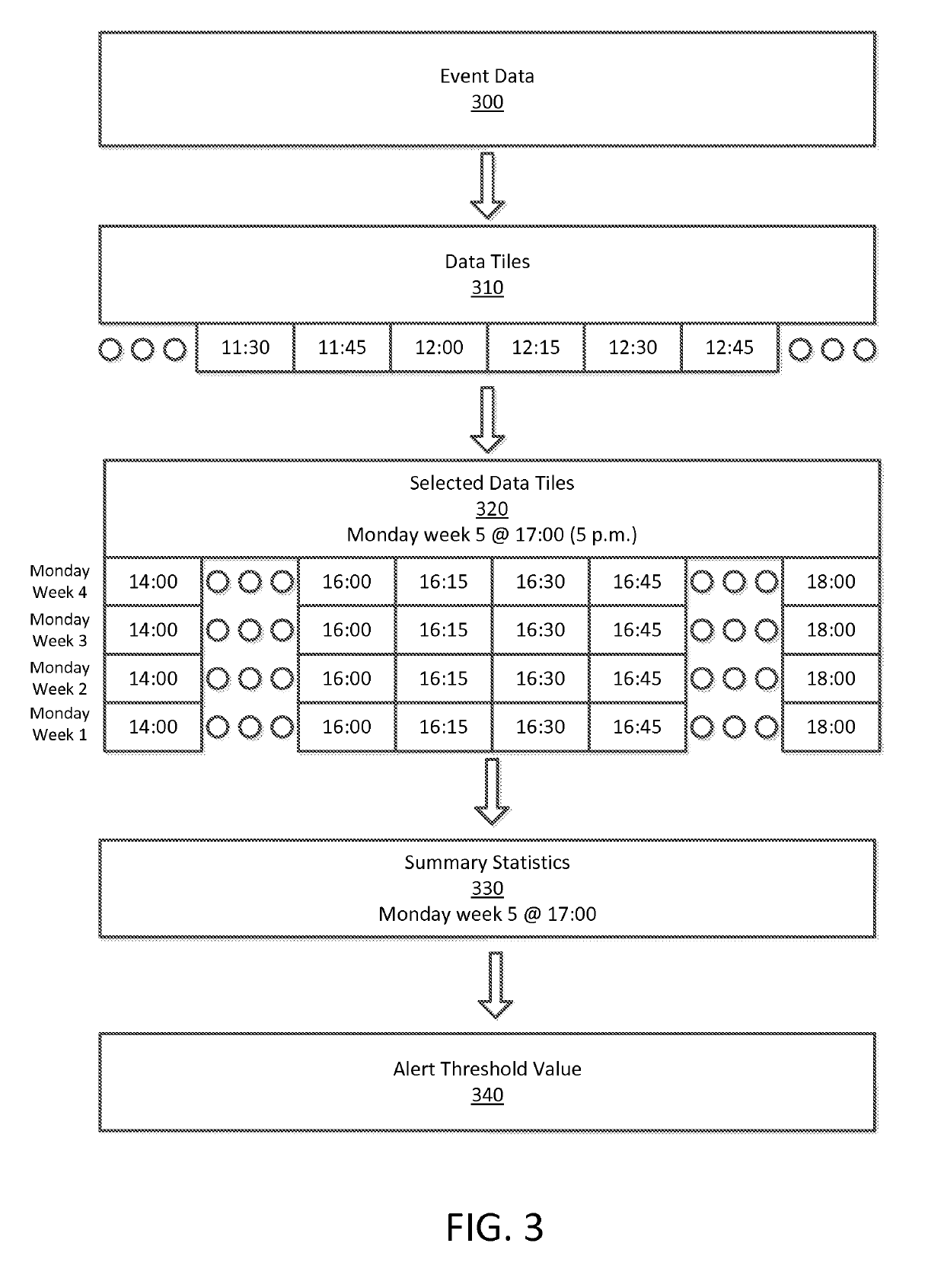System Event Analyzer and Outlier Visualization
an event analyzer and system technology, applied in the field of system event analysis, can solve the problems of affecting the revenue and reputation of a company, affecting the detection of outliers, and affecting the timely detection of outliers, so as to increase the weight of alert levels, increase or decrease the notification threshold, and reduce the notification threshold
- Summary
- Abstract
- Description
- Claims
- Application Information
AI Technical Summary
Benefits of technology
Problems solved by technology
Method used
Image
Examples
Embodiment Construction
[0016]FIG. 1 shows an environment in which an event analysis system 100 operates, according to one embodiment. In this example, the event analysis system 100 receives event data from one or more monitored systems 110 and provides event analysis and outlier detection information to client device 120. These systems may be connected via a network 130, such as the internet, or another transmission channel for communication between these systems.
[0017]Monitored systems 110 provide streams of event data to the event analysis system 100 and are typically computing devices that report data regarding actions or status of the monitored system. The events generated by the monitored systems 110 can include asynchronously-generated events (e.g., those that occur on a user action), and may include reporting monitored data that is polled at specified time periods, such as CPU or memory utilization levels that are monitored and reported at a particular frequency.
[0018]According to some examples, su...
PUM
 Login to View More
Login to View More Abstract
Description
Claims
Application Information
 Login to View More
Login to View More - R&D
- Intellectual Property
- Life Sciences
- Materials
- Tech Scout
- Unparalleled Data Quality
- Higher Quality Content
- 60% Fewer Hallucinations
Browse by: Latest US Patents, China's latest patents, Technical Efficacy Thesaurus, Application Domain, Technology Topic, Popular Technical Reports.
© 2025 PatSnap. All rights reserved.Legal|Privacy policy|Modern Slavery Act Transparency Statement|Sitemap|About US| Contact US: help@patsnap.com



